Story at a glance:
- A radiant system helped one Portland, Oregon, project achieve LEED Gold.
- Windows account for 30 to 50% of a building’s heating and cooling energy loss.
- Ludowici’s terra-cotta tiles are 100% recyclable and free of toxic and synthetic ingredients.
These days you’ll find many green building innovations that go beyond the perhaps more obvious sustainable building materials on architects’ lists, like recyclable steel or wood.
We’ve asked the experts to share some of the most exciting green building innovations as of late, from products that monitor indoor air quality to new sustainable ways to heat your building.
1. Low-Carbon Concrete
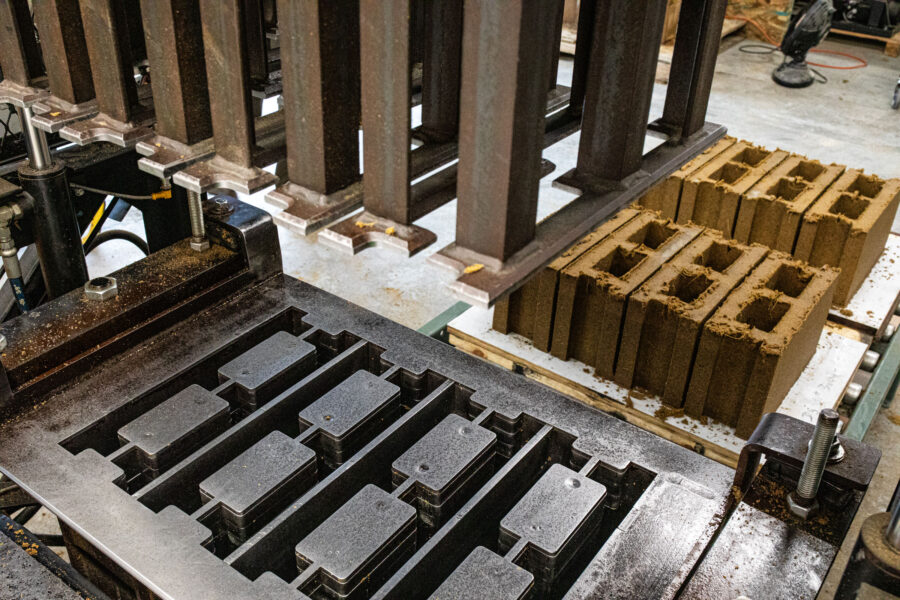
Photo courtesy of Prometheus Materials
As the second-most used resource in the world, concrete is an integral component of the construction industry, showing up in everything from homes and skyscrapers to bridges and sidewalks. The problem with conventional concrete is that it is an extremely carbon-intensive material, with the concrete and cement industry accounting for approximately 7 to 8% of the world’s CO2 emissions.
In an effort to improve concrete’s overall sustainability, concrete and cement manufacturers have started producing low-carbon alternatives. These are four basic ways concrete may be considered low-carbon:
- Produced using clean energy. Instead of burning fossil fuels like coal to fire the kilns needed to produce clinker, concrete manufacturers can switch to cleaner energy sources like biomass or solar.
- Use of recycled/alternative materials. Replacing carbon-intensive cement with alternative or recycled materials like slag, fly ash, or natural pozzolans can help reduce concrete’s CO2 emissions while also preventing organic pollutants and toxic metals from entering the waste stream.
- Onsite carbon capture and storage. Concrete manufacturers can help reduce carbon emissions by capturing CO2 as it is generated, compressing it into a liquid form, and injecting it into geological formations for long-term storage; once injected the liquid CO2 begins to mineralize, eventually forming carbonate rock.
- Carbon utilization. Alternatively, captured carbon can be utilized—in an altered or unaltered state—in the production of other products; captured carbon can even be injected into fresh concrete during the mixing process as a means of sequestering it for the long term.
Prometheus Materials’ ProZero is perhaps the most extreme example of low-carbon concrete carbon solutions. A zero-carbon bio-concrete solution, ProZero virtually eliminates the need for limestone-based cement altogether—all of the calcium carbonate utilized in the product is instead produced by stimulating microalgae in a similar manner to how coral reefs are formed. The biomineralized calcium carbonate that is then dried and used as the basis for bio-cement.
In addition to being a more sustainable concrete product, ProZero is also 15 to 20% lighter, possesses comparable compressive strength, and far exceeds the flexural strength of conventional concrete. “This degree of flexural strength will open up quite a few new market opportunities that traditional concrete just can’t fulfill,” Loren Burnett, president, CEO, and cofounder of Prometheus Materials, previously told gb&d.
2. Bio-Based Plastics

Covestro offers MDI—a core component of high efficiency rigid polyurethane insulation—in a climate neutral version through the use of bio-waste as an alternative raw material. Photo courtesy of Covestro
Just like conventional concrete, there’s no denying traditional, petroleum-based plastic is an unsustainable material, but that doesn’t change the fact that plastic has been a useful material within the AEC industry for years. Plastics can be, for example, key to manufacturing energy-efficient, high R-value insulation products like rigid polyisocyanurate and polyurethane foam.
Companies like Covestro—a leading manufacturer of high-quality polymer materials—are pioneering advancements in the use of alternative raw materials for bio-based plastic products. “Covestro has been on the forefront of new research into using plant biomass to extract organic chemicals like acids, esters, alcohols, and phenols from sources including sugar cane, corn, straw, and wood,” Richard Skorpenske, head of sustainability and public affairs at Covestro, wrote in a previous gb&dPRO article.
In 2021 the company started offering a new toluene diisocyanate—a core building block in polyurethane foam—produced in part from organic wastes like used oil and grease. The following year Covestro helped develop a breakthrough technology for producing the base chemical aniline (crucial to the production of methylene diphenyl diisocyanate, another chemical used in the creation of insulating foams) entirely from biomass. All of the carbon in this base chemical was sourced from industrial sugar, greatly reducing its GHG footprint.
3. Mass Timber
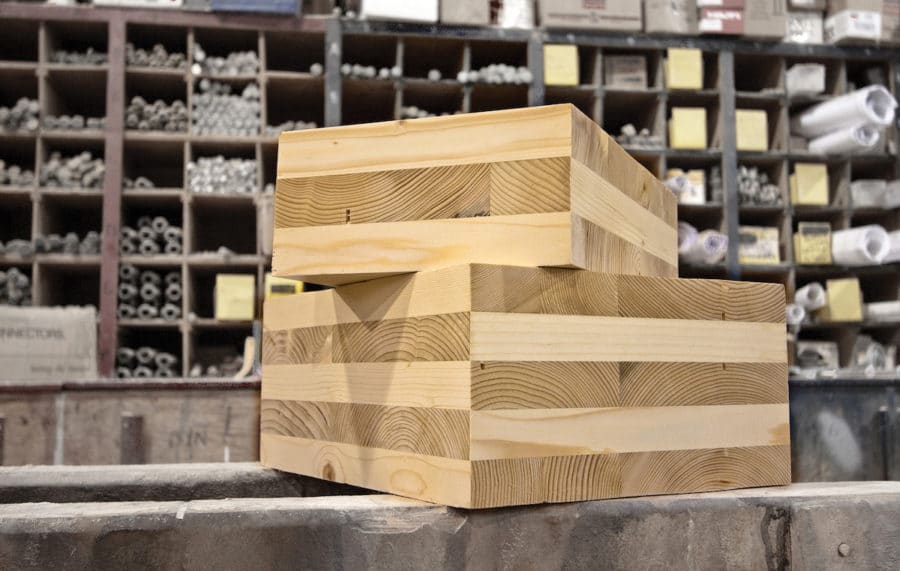
Cross laminated timber is a strong, lightweight, and sustainable building material. Photo courtesy of Oregon Forest Resources Institute
In construction mass timber refers to a subset of engineered wood made by binding together multiple layers of wood planks. The resulting product is much stronger and more structurally sound than traditional timber, which allows it to be used as a viable, low-carbon alternative to concrete.
In general there are four main categories of mass timber: cross-laminated, nail-laminated, dowel-laminated, and glued-laminated.
- Cross-laminated timber (CLT). Several layers (typically an odd number) of wood planks are glued together, with each layer perpendicular to the one above and below it.
- Nail-laminated timber (NLT). One of the oldest forms of mass timber; layers of wood are bound together by nails.
- Dowel-laminated timber (DLT). Wood planks are drilled and then bound together by long wooden dowels.
- Glued-laminated timber (Glulam). Layers of wooden planks are attached to one another using glue.
As an organic material mass timber actually sequesters CO2 throughout its operational lifespan, allowing buildings to drastically reduce their total embodied carbon. The tallest mass timber building in the world, Ascent MKE, for example, is estimated to sequester approximately 7,200 metric tons of CO2 thanks to its extensive use of glulam and CLT.
The true sustainability of mass timber products is partially dependent on where the timber is sourced and how it is manufactured. That’s why, when considering mass timber, it’s important to look for companies that source their timber from responsibly-managed, FSC-certified (or regional equivalent) forests and who practice sustainable business strategies.
Binderholz, for example, is a sustainability-minded Austrian mass timber provider whose sites all meet strict Programme for the Endorsement of Forest Certification standards. The company also adheres to a stringent zero-waste policy, ensuring that 100% of all timber raw material—from core to bark—is utilized in some manner; wood processing byproducts like sawdust, shavings, and wood chips, for instance, are converted into biofuels or climate-neutral energy via the company’s proprietary biomass combined heat and power station.
4. Expanded IAQ Monitors
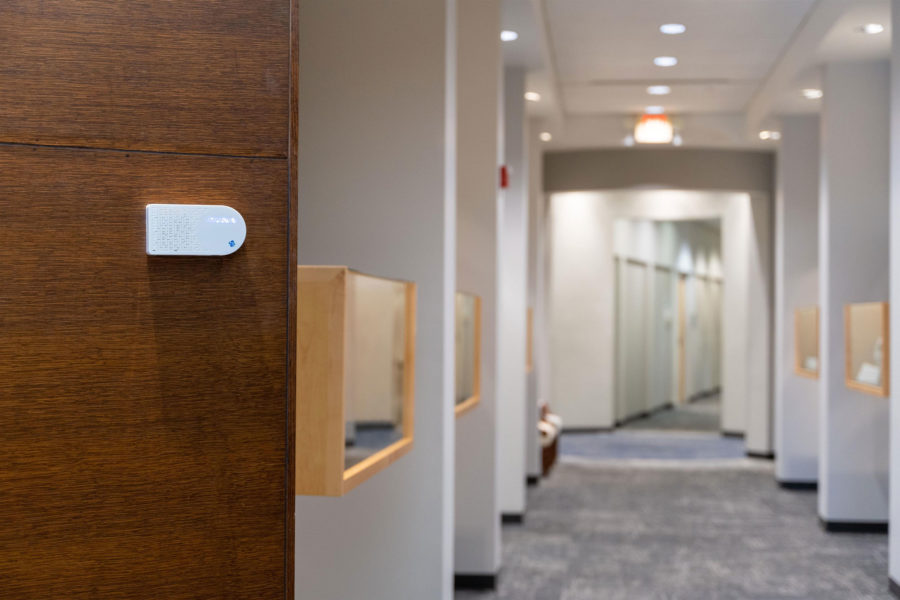
The AirAssure IAQ Monitor measures particulate matter (PM) and up to six different types of gases commonly found indoors, along with traditional IAQ parameters. Photo courtesy of TSI
Building materials, furnishings, and even products like air fresheners can release pollutants more or less continuously, according to the EPA. Inadequate ventilation is a major contributor to poor indoor air quality (IAQ). The EPA reports that if too little outdoor air enters indoors, pollutants can accumulate to levels that can pose health and comfort problems. “Unless buildings are built with special mechanical means of ventilation, those designed and constructed to minimize the amount of outdoor air that can ‘leak’ in and out may have higher indoor pollutant levels,” the EPA says.
Having an advanced indoor air quality monitor can alleviate some of that risk and worry. TSI’s new Q-Trak XP Indoor Air Quality Monitor combines gas and particle measurements with traditional IAQ parameters in one lightweight, handheld instrument that is easy to use, configure, and calibrate in the field.
“The mix-and-match sensors allow IAQ professionals to easily configure the product for each specific project, reducing the need for multiple instruments and downtime in the field,” Kevin Chase, Global Product Manager for IAQ and Exposure Monitoring products at TSI, previously told gb&d. The Q-Trak XP Indoor Air Quality Monitor is ideal for IAQ surveys and investigations, proactive IAQ monitoring in schools and office buildings, IAQ compliance testing, evaluating thermal comfort, and more.
5. Closed Cavity Facades
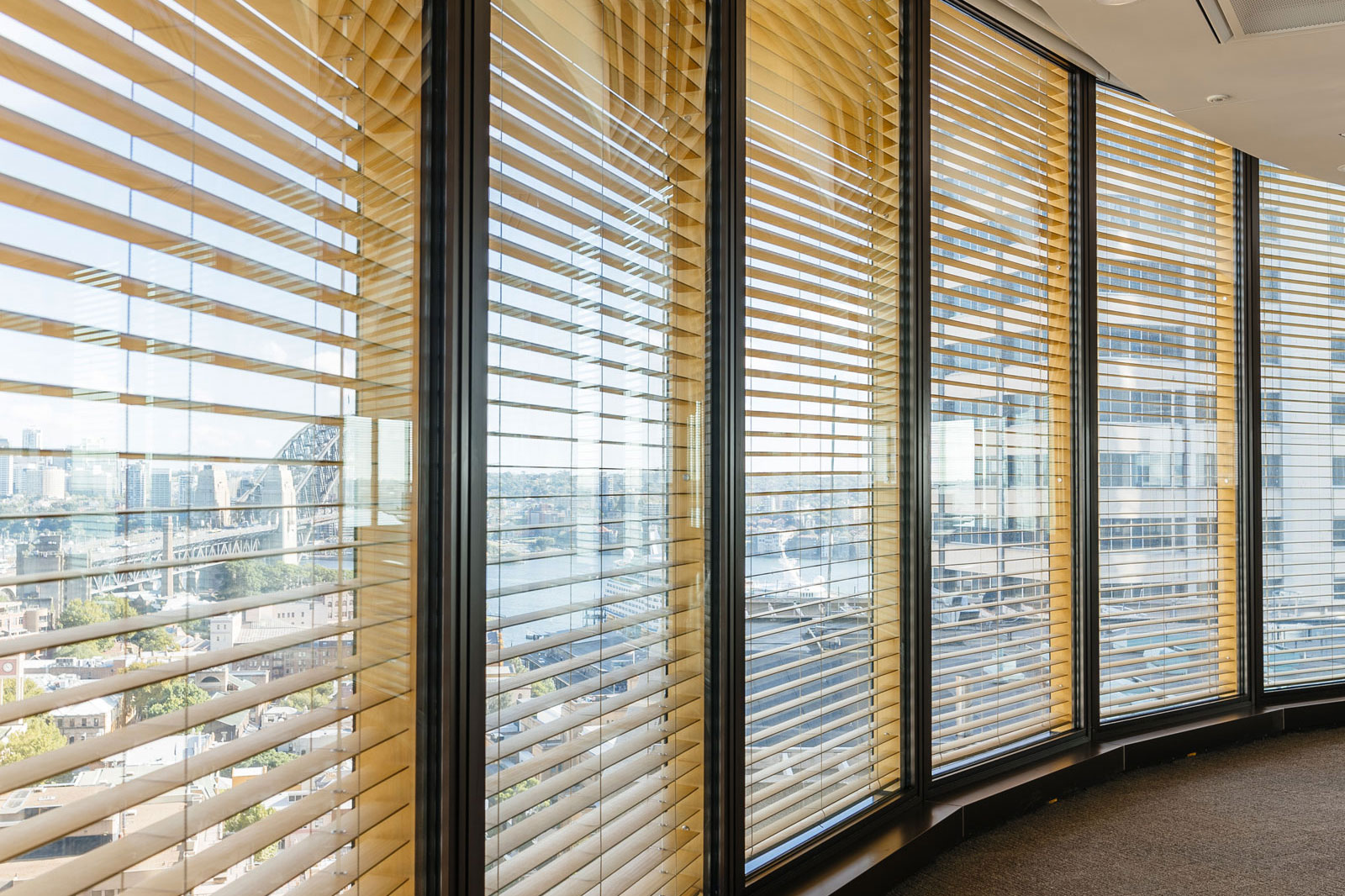
Photo courtesy of Permasteelisa
Studies show overall building energy consumption can be significantly reduced by the use of double-skin and closed cavity facades—by as much as 20% in most climates—relative to the baseline of traditional single skin curtain wall facade.
Derick Koprek at Permasteelisa recently shared with us how a closed cavity facade (a compact double skin facade consisting of single glazing on the outside and a DGU or TGU on the inside), creates a ventilated cavity where blinds can be integrated and a low volume of clean, dry air supplied to the cavity to prevent condensation and dust with the cavity at all times. “This provides the thermal advantage of an exterior operable shading device without the high maintenance costs,” Koprek wrote.
Closed cavity facades offer excellent thermal performance in the transparent areas with U-values in the range of U-0.145 to U-0.15. Other benefits include a high degree of solar protection by the automated blind system, reduced maintenance costs, and top-notch acoustic performance, among other perks.
6. Radiant Systems for Commercial Projects
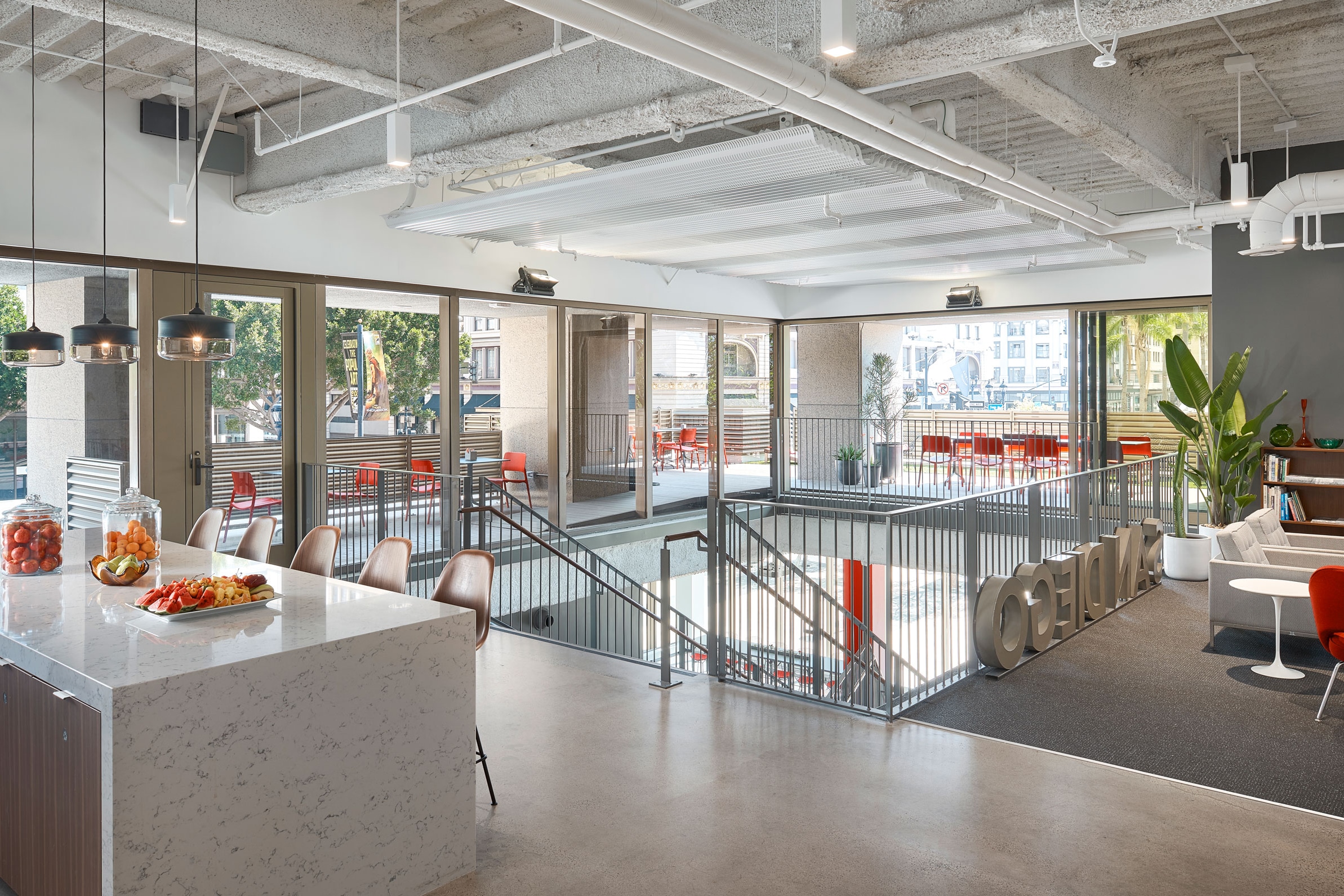
Photo courtesy of Barcol-Air
As architects and designers seek energy-efficient, design-friendly radiant systems, they increasingly recognize the benefits that radiant heating and cooling systems offer. As far as green building innovations go, radiant solutions have long been popular in Europe, even as they continue to gain steam in the US. Barcol-Air itself has been a large part of the excitement. But some have asked: Can radiant systems be used in a commercial building as the sole sensible heating and cooling system?
The short answer is yes, says Michael O’Rourke at Barcol-Air. He writes in a previous article for gb&d: “Although new buildings with tight envelopes are the best applications, many retrofits have been done over the past 10 to 15 years as older buildings have been updated to allow the use of radiant.”
Examples include the award-winning Edith Green-Wendell Wyatt Federal Building project in Portland, Oregon. The 1970s high-rise steel building wasn’t very energy-efficient, and that was one of the main reasons for its renovation. The building was updated with solar shading on two sides (SE and SW), and the hanging trellis gardens were added on the northwest side. This allowed for plentiful daylight in the space but reduced the overall solar loading to a level where radiant ceiling system was feasible, O’Rourke said. This building renovation, completed in 2013, was awarded a LEED Gold designation.
Barcol-Air manufactures premium radiant heating and cooling systems that deliver optimal comfort using advanced thermal exchange methods. “Radiant can be used for sensible loads—both heating and cooling—and to offset any radiant asymmetry due to cold or hot walls or glass facades in the space,” O’Rourke said in a past interview with gb&d. “But it’s not appropriate for fresh air or dehumidification requirements.”
Therefore, the company offers advanced Active Chilled Beam technology to provide each space with an additional level of ventilation and dehumidification, creating fully integrated heating and cooling operations that positively contribute to LEED accreditation.
Barcol-Air’s Active Beam application offers significant space savings, too, thanks to smaller ductwork requirements. It can be installed tight up against the slab, resulting in reduced floor-to-floor heights and reduced construction costs on new buildings. In addition to low maintenance requirements, Active Beam systems also use the same water temperatures used in radiant panels and exude low noise levels.
7. Fiberglass Windows
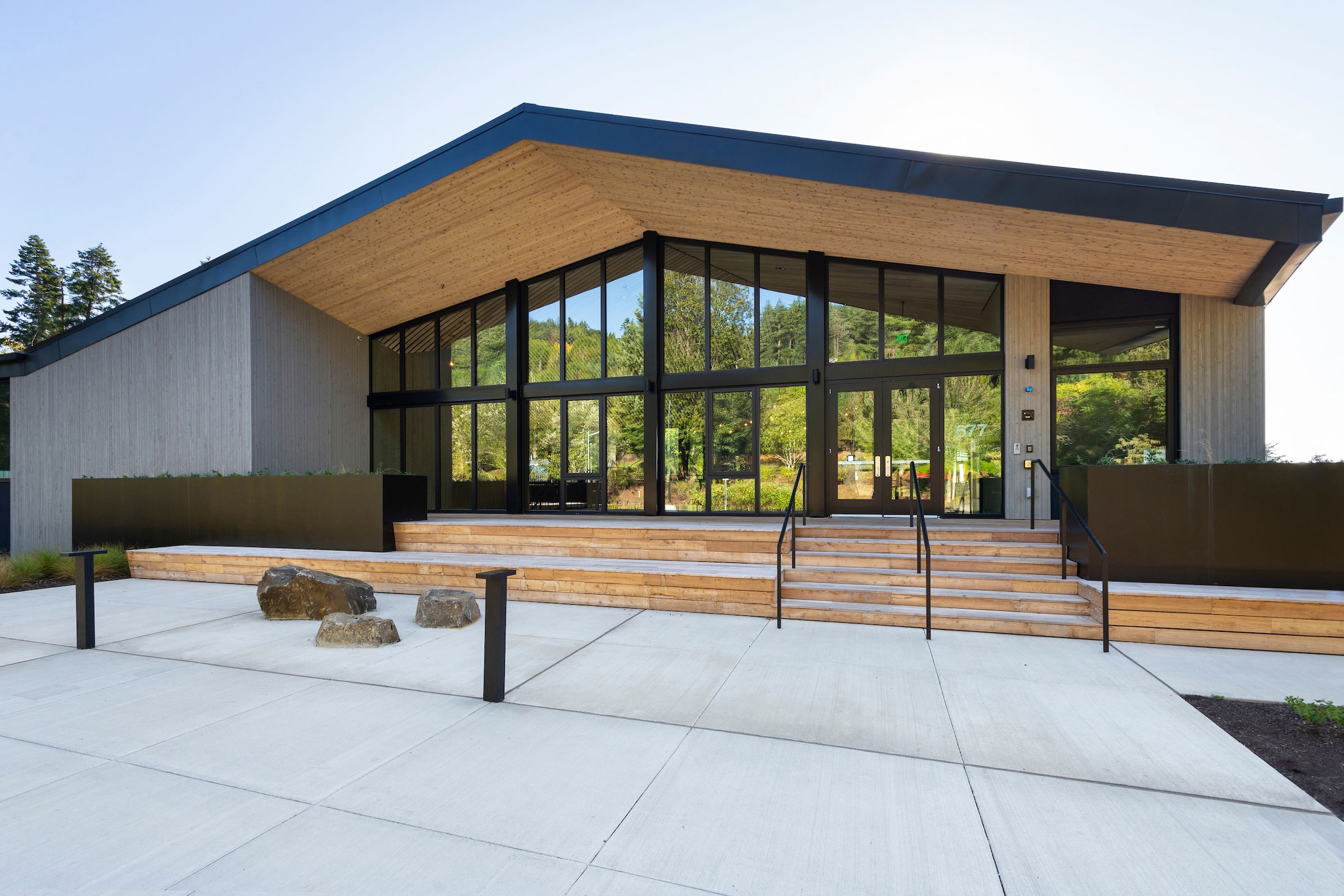
Photo courtesy of Cascadia Windows & Doors
Windows currently account for anywhere from 30 to 50% of the heating and cooling energy loss in a building, according to Cascadia Windows & Doors Technical Director Michael Bousfield, who recently shared how fiberglass windows impact building performance in an article for gb&d. That means for every dollar spent on heating and cooling, up to 50 cents is lost through the window.
Bousfield says fiberglass is an ideal structural material for window and door frames—specifically fiberglass with a high glass-fiber-to-resin formula. “Nearly 10 times stronger than traditional vinyl, thermoset fiberglass is dimensionally stable, meaning it won’t creep and deflect over time,” he told gb&d. “This stability and strength allow fiberglass frame windows to withstand higher wind load, resulting in larger possible windows—even on tall buildings with high wind loads.”
He says fiberglass also represents less embodied carbon compared to traditional aluminum windows in both sourcing its raw materials and fabrication, carbon draw during its service life, as well as its end of life recycling.
Fiberglass windows are also reported to be impervious to decay, insect attack, and corrosion and can stand up to extreme weather temperatures (-40°F through 350°F and higher) without becoming brittle or soft, giving them a lifespan of 50 to 80 years. “That’s more than four times the lifespan of vinyl/PVC and twice the serviceable lifespan of aluminum windows,” Bousfield wrote.
8. Fabric Structures

Shelter-Rite architectural fabric structures offer an alternative to brick-and-mortar. Photo courtesy of Shelter-Rite.
Innovative architectural fabric structures like those from Shelter-Rite are increasingly being used as an alternative to brick and mortar. Options run the gamut from air-supported structures to pre-engineered frame structures (with a steel or aluminum frame covered with an architectural membrane) to custom-designed tension structures.
Fabric structures reduce construction and installation time, they are energy-efficient, and can help you keep costs low.
Architectural fabric structures requiring a large interior, wide-open space are known as clear span structures, according to Frank Bradenburg, who previously contributed to gb&d. They do not require internal support columns for reinforcement in the middle of the structure because the high strength architectural fabric only weighs between .15 to .20 pounds per square foot. The clear span width of an architectural fabric structure can range from 50 to 300 feet.
Many structures require the use of a clear span design, including participative sporting facilities for football, soccer, tennis, baseball, and swimming pools; sports stadiums; amphitheaters; airport terminals; rail stations; churches; and other public gathering spots. Industrial applications like warehouses, aircraft hangers, and bulk storage facilities also require a clear span structure.
9. Terra-Cotta Tile
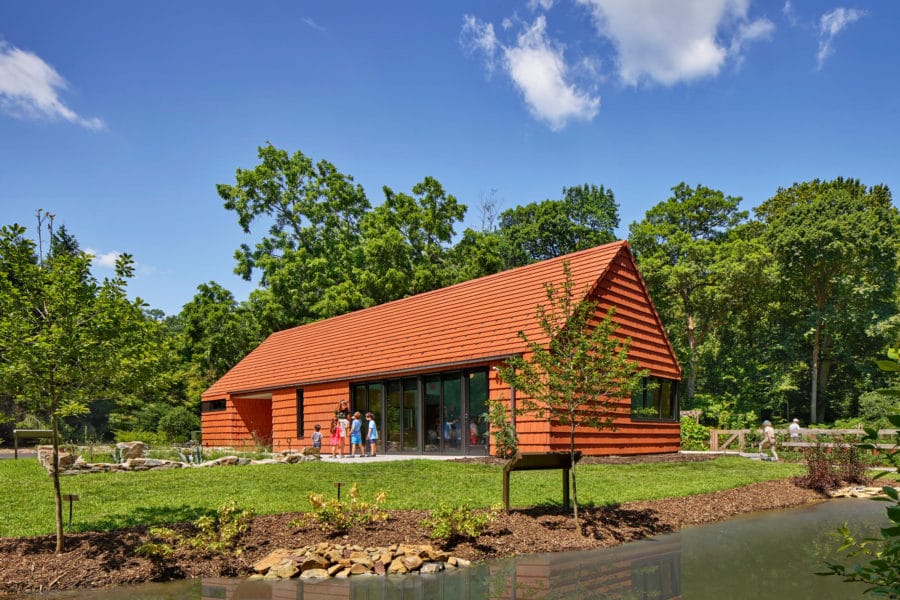
Tyler Arboretum’s living classroom building is entirely clad in terra-cotta tiles from Ludowici. Photo by Halkin Mason Photography
You can also incorporate architectural terra-cotta tile in a modern way to harness a centuries-old material. Terra-cotta is green, recyclable, sustainable, durable, low maintenance, and fire-resistant—not to mention that it has had proven success for thousands of years, wrote Rob Wehr of Ludowici in a previous article for gb&d.
Made from the earth and creating zero waste, Ludowici’s terra-cotta tiles are 100% recyclable, energy-efficient, and free of toxic and synthetic ingredients. Their tiles require no chemical cleaning, which protects the environment from harmful runoff, and they also won’t burn. Many non-fire-resistant roofing products require expensive treatments to meet fire codes. With Ludowici tile, extra steps and added costs are eliminated and replaced with peace of mind. All Ludowici products are Class-A fire-rated without special treatment when used in the proper assembly, Wehr said.
The Tyler Arboretum living classroom building, designed by DIGSAU Architects in Pennsylvania, is entirely clad in terra-cotta tiles from Ludowici. “The arboretum was looking for a more natural material that could be incorporated into a natural setting, would last, and would really speak to the purpose,” said Tab Colbert, CEO of Ludowici, in a previous article for gb&d. Colbert said when it came to LEED certifications, roofing hasn’t traditionally been awarded an abundance of points because conventional shingles are an oil-based product. “They never really look at the life of the product,” he said. “We have applications that are 130 years old that are performing great.”
10. Metal Wall Panels
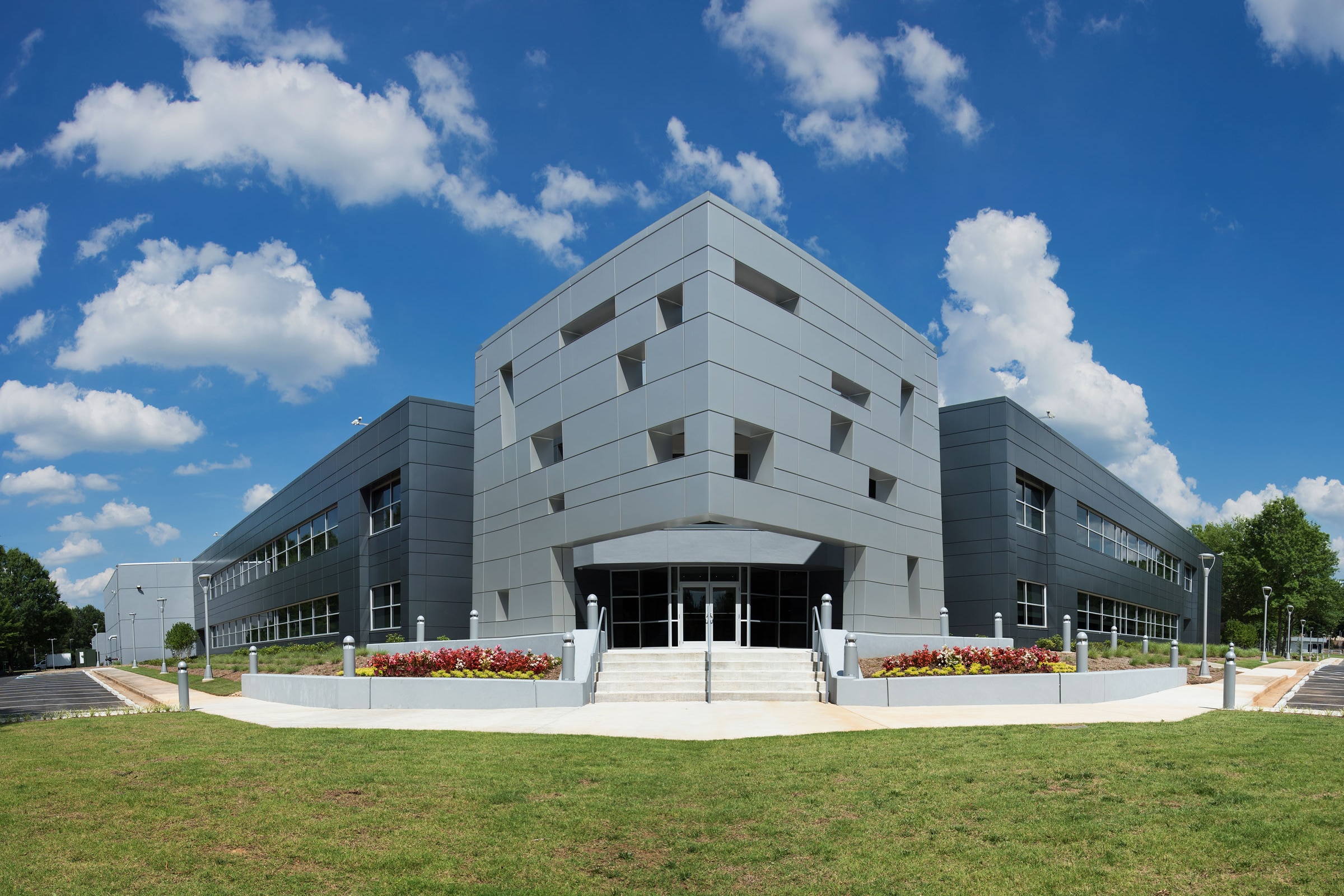
Two colors of Intercept—Silversmith and Gray Velvet—were installed at Acuity Brand Lighting’s Engineering and Technology Center in Decatur, Georgia, to help create a cutting-edge work environment. Photo courtesy of CENTRIA
One quick way to determine a product’s true value is to check out whether it has a Declare Label. You can find a list of products with Declare Labels on the International Living Future Institute (ILFI)’s website. Developed by the ILFI, a Declare Label looks at the product source location, the materials that make up the product, and how the product is treated at the end of its life.
Intercept, a modular metal wall panel system from CENTRIA, is one of many top products with a Declare Label. Intercept provides design versatility by incorporating different substrates, depths, slopes, curves, and perforations into an easy-to-install rainscreen. The flat, rectangular metal wall panel system can be applied over any sort of back-up wall system.
Intercept is 98.6% recyclable, has a 20-year finish warranty, can withstand the life span of the building when following proper maintenance procedures, and is Living Building Challenge compliant.
Laura Rote contributed to this article.




